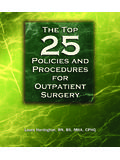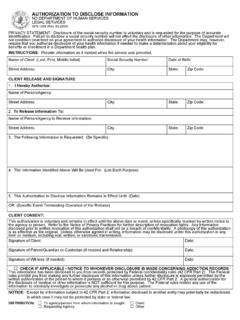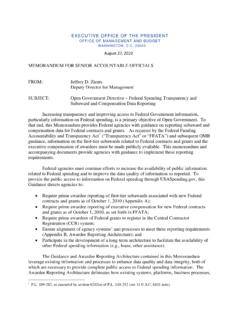Transcription of IHORM Supporting Notes - Air Liquide Home Health
1 IHORM Supporting Notes Please note that the answers to the high and moderate risk questions are based on what the patient reports. The clinician should make every effort to ensure that the response is accurate in order to ensure safe provision of home oxygen if clinically indicated. The safety of home oxygen has a direct bearing on the patient, family members, residents of neighbouring properties, Health Care Professionals and members of the emergency services. Does the patient smoke? This should reflect all forms of smoking (pipe, cigarettes, cigars etc) If the patient has quit a suitable period of time prior to the point of oxygen prescribing (2-3 months would give a stable period of time to assess whether a sustained smoking cessation has succeeded).
2 Occasional or intermittent smoking should still be considered as currently smoking. If the IHORM is being completed whilst the patient is admitted to a hospital, the time period prior to the in-patient stay should be used to reflect their smoking status. Does the patient use an e-cigarette? As e-cigarettes use a heated coil that glows red hot, the ignition risk in proximity to oxygen remains the same as a lit cigarette. In addition, the charging of such electrical devices carries a significant risk of fire which has led to fatalities in the UK. Does anyone else smoke at the patients property? Other or multiple smokers pose a similar risk to the patient (and others in the vicinity).
3 Is there a history of drug or alcohol dependency? Any substance abuse (prescription medication, illicit drug use or alcohol) that can affect the cognition and/or mental capacity of a patient must be considered as a high risk to patient safety Does the home have working smoke alarms? Smoke alarms do not prevent a fire from starting and therefore only limit its consequences. Where a patient reports that they do not have any (or they are not working), it is highly recommended that a direct referral to the Fire and Rescue Service is made to ensure adequate coverage of working smoke alarms in the property and fire safety engagement can take place. If not known default to NO Have they had a fall in the past 3 months?
4 The safe provision of oxygen also involves the patient being able to safely move around the home in the presence of the oxygen equipment. Long lengths of tubing are to some extent unavoidable and the risk of slips trips and falls can have serious consequences when the patient is frail or elderly. The context of a fall should be considered carefully in conjunction with current mobility levels around the home environment Have they had previous fires in the home? This is an indicator of high risk provided if is taken in the correct context, such as timescale, cause and change in circumstance. Any factors that suggest poor decision making (such as smoking in bed), chip pan fires etc, within a recent timeframe would elevate this to a high risk.
5 However changes in circumstance, such as a patient now living in a care home environment may provide assurance that this is no longer a valid concern Does the person have any identified issues affecting their mental capacity? Where a patient has any identified issues affecting their mental capacity (such as dementia, confusion or memory disturbances), they should be considered as a moderate risk which could potentially be compounded by other factors. Oxygen is not excluded from such patients but other considerations exist to ensure that provision is clinically and physically safe. Do they live in a property that is joined to another? Oxygen equipment carries a risk of fire and/or explosion and therefore properties that are semi-detached, terraced or flats compound the risk or serious harm or injury in the event of a fire.
6 Can they independently evacuate the property? This is particularly important if the patient lives alone, or is likely to be alone at some point in the day or night. In the event of a fire the patient should be able to evacuate the property and raise the alarm. If this is unlikely, or in doubt, additional considerations may be required in order to safely provide oxygen therapy Are there any vulnerable dependents in the property? Consideration for other vulnerable dependants (children and adults) in close proximity to the patient and oxygen should be made. If children are present, cylinder storage should be discussed with the patient to ensure they are safely placed within the property and cannot tip or fall onto the child.
7 Do they live in a multiple occupancy property? Where a property contains multiple occupants (such as bedsits/rented rooms) there is an increased risk of fire and more people affected should one occur. The position of the oxygen and equipment should be carefully considered so as to allow effective escape routes in the event of a fire. HOCF GUIDANCE Notes Who may give consent? 1. It is presumed that anyone aged 16 or over is competent to give consent for her/himself unless the opposite is demonstrated. If a child under the age of 16 has sufficient understanding and intelligence to enable him or her to understand fully what is proposed , then he or she will be competent to give consent for him/herself.
8 Young people aged 16 and 17, and legally competent younger children, may therefore sign this form for themselves, but may like a parent to countersign as well. 2. If a child is unable to give consent him/herself, person(s) with parental responsibility for the child may provide information about their wishes in relation to the child. However, the final decision to disclose information lies with the healthcare professional in charge of caring for the child. Any decisions taken must be in the best interests of the child. Even where a child is able to give consent him/herself, a healthcare professional with responsibility for caring for the child should involve those with parental responsibility for the child s care, unless the child specifically asks the healthcare professional not to do so.
9 3. If a patient is mentally competent to give consent but is physically unable to sign a form, this form should be completed and signed by an independent witness as confirmation that the patient concerned gave consent orally or non-verbally. 4. Where an adult patient (aged 16 or over) lacks capacity to give or withhold consent, decisions must be taken by the healthcare professional in charge of the care of the patient. Decisions must be made in the best interests of the patient, taking into account any wishes that may have been previously expressed by the patient (for example, before the loss of capacity) and any views or wishes expressed by the patient s family or friends.
10 Guidance on Confidentiality and Consent The NHS Confidentiality Code of Practice published by the Department of Health 2003 The HSCIC Guide to Confidentiality The Department of Health guidance on consent to treatment





